Gregorian Easter
Easter is the main holiday for all Christians, regardless of denomination. The Lord's Resurrection Day marks the victory of life over death. The deep symbolism of the holiday suggests that above worldly life there is always faith in resurrection and eternal existence. However, despite the general idea, believers of different denominations celebrate Easter in different ways. So, Catholic and Orthodox Easter have a number of significant differences, from the date of the celebration to the dishes that are served on the table. AquaMarket offers to study the main features and traditions of the holiday in order to understand the issue.
Catholic Easter and its differences
There are several main aspects that distinguish the holidays for believers of different denominations. We will cover the main ones:
- Date of celebration. Catholic Easter 2021 falls a month earlier than Orthodox, namely April 4. Why don't the holidays coincide? Usually the Resurrection of the Lord is celebrated on the first Sunday following the first full moon after the vernal equinox. There is a special Alexandrian calculation method - Paschalia, according to which the date of the holiday is determined depending on the lunisolar cycle. It is also important to understand that Orthodox Christians use the Julian calendar for calculations, while Catholics define Easter according to the Gregorian calendar. That is why every year Orthodox and Catholic Easter fall on different days and, with rare exceptions, the holidays coincide.
- Great post. Having understood the question of how the date of Easter is determined, you will have to delve into the issues of observing Great Lent. Immediately, we note that both Catholics and Christians keep it. For Orthodoxy, Fasting is associated with the number 40, because that is how many days Jesus spent in the desert without food. Accordingly, for Orthodox Christians, Lent before Easter is one of the strictest and longest of the year. They keep it for 48 days continuously, starting from Clean Monday and immediately until the Sunday of the Lord. The Western Church is more loyal and condescending. Here it is customary to keep a strict fast all days except Sunday. Catholics start fasting on Ash Wednesday, 46 days before Easter. It turns out that Catholics fast 6 weeks for 6 days, except Sunday, plus 4 days after Ash Wednesday. There are some differences in the diet. The Orthodox have a complete ban on food of animal origin (fish, eggs, milk, meat), and believers abstain from entertainment and alcohol. Catholics can eat eggs, fish and dairy products during fasting, and the strict prohibition applies only to Ash Wednesday (the beginning of the fast), Good Friday and Holy Saturday.
- Dishes for Easter. The festive feast is not complete without the traditional Easter cake. Sweet bread with dried fruits, spices and airy white icing instantly arouses appetite even for those who do not like sweets. In the East, festive pastries are more traditional. The Easter cake has a round shape and the same type of decor. But in the West there are no such restrictions. Catholic Easter does not provide for the tradition of lighting food in the church before a meal. And at the table they eat not Easter cakes, but Pannettone, sweet spikelets and cinnamon rolls. Many even serve fruit cake on the table. The main meat dishes in Western European countries are rabbit, turkey or chicken.
- The symbol of Catholic Easter. For the West, the holiday is largely a commercial phenomenon, so the symbolism is radically different. We have these spring flowers, Easter cake, colored eggs. But Easter among Catholics is associated with chocolate hares, eggs and other gifts in bright baskets, which are customary to buy and give to relatives and close friends. The tradition of finding chocolate eggs is alive and well. Parents hide sweets in the yard, and children with small baskets are looking for holiday treats among the grass and flowering bushes.
- Colored eggs. In Catholic countries, Easter eggs do not carry the same symbolism as in Christians. Catholics can do without this attribute altogether by purchasing several plastic alternatives for purely decorative purposes. But for Orthodox Christians, the ceremony of decorating an Easter egg is a real sacrament. The product is treated with great respect, and even the shells of peeled eggs are not accepted to be thrown into the trash.
This is where the cardinal differences of the celebration of the Resurrection of Christ end. Whatever confession you belong to, AquaMarket will help you organize a holiday with maximum comfort. A huge range of products, traditional Italian pannettone, elite alcohol, fresh eggs - all this and much more can be found in our online catalog. Do not forget about themed accessories: baskets, napkins, exquisite dishes and other paraphernalia. Delivery of goods is carried out everywhere throughout Ukraine!

 From 07.00 to 22.00
From 07.00 to 22.00


























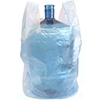





















































































































































































































































































































































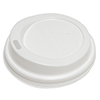









































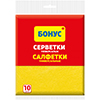








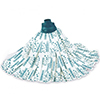
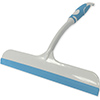
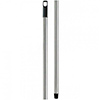




























































































































































































































































































































































































































































































































































































































































































































































































































































































































































































































































































 Nova Poshta
Nova Poshta